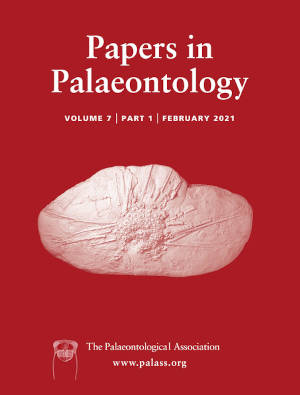Reg. Charity No. 1168330

Small shelly fossils (SSFs) are highly informative of the ‘Cambrian explosion’. Their palaeobiodiversity has been documented from lower Cambrian deposits worldwide but it remains elusive in areas such as Iran, despite this region occupying a critical position on the north-western Gondwana margin during the early Cambrian. This new study of the SSFs of the lower Cambrian of northern Iran provides a large new dataset from this understudied area. We revise the micropalaeontological signal of the Soltanieh Formation of the Alborz Mountains and introduce novel data from the Soltanieh and overlying Barut Formations of the Soltanieh Mountains. The new, solid taxonomic and stratigraphic SSF data enable us to distinguish two successive microfaunal assemblages. The first occurs in the Soltanieh Formation of the Soltanieh and Alborz Mountains and is dominated by anabaritids (Anabarites trisulcatus, A. ex gr. trisulcatus, A. tristichus, A. dalirense sp. nov., Cambrotubulus decurvatus) along with protoconodonts (Protohertzina anabarica and P. unguliformis), maikhanellids (Maikhanella multa, Purella squamulosa and Purella sp.), Aetholicopalla adnata, indeterminate cones and irregular tubes. The second assemblage, from the Barut Formation, is dominated by a diverse assemblage of molluscs (Oelandiella korobkovi and cap-shaped morphotypes). Siphogonuchitid sclerites also occur in both assemblages. The two SSF assemblages are characteristic of the Terreneuvian. Our dataset enables us to assess the sequence of faunal change of the Ediacaran–Cambrian transition; in contrast to the tube–sclerite–brachiopod succession presented in the literature, the Iranian fauna changes from one dominated by tubes and sclerites, to one dominated by molluscs and sclerites.
AcknowledgementsThe authors warmly thank the staff of the MfN for assistance in producing the data for the paper, especially Markus Brinkmann for sawing the samples, Elisabeth Wittstock for carefully picking SSFs and Kirsten Born for guidance on the use of the SEM. Christian B. Skovsted (Natural History Museum of Stockholm) and an anonymous reviewer provided valuable advice and corrections that significantly improved the manuscript. LD benefited from a postdoctoral research fellowship of the Alexander von Humboldt Foundation. Open Access funding enabled and organized by Projekt DEAL.